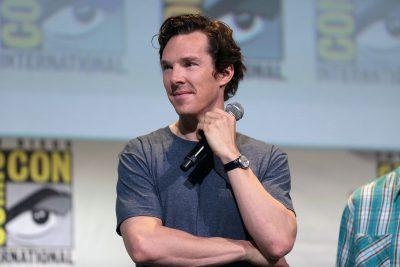“The Current War,” a story about two tech giants striving to invent the world’s dominant electrical system, is a satisfying depiction of one of history’s most significant scientific revolutions.

The film, inspired by true events, follows inventor Thomas Edison’s brilliant battle with competitor George Westinghouse over whose electrical system would electrify the world – Edison’s reliable, underground direct current or Westinghouse’s efficient yet potentially dangerous alternating current.
One of the film’s main draws is its stellar cast, which bring both well-known and obscure historical figures to life. At the helm are Academy Award nominees Benedict Cumberbatch and Michael Shannon.
Edison, played by Cumberbatch, is presented as a confident, witty genius who puts all of his faith into his invention. As the film progresses, the inventor is blinded by his confidence, and ignores the potential in others, such as his rival, Westinghouse. Shannon portrays the intrepid Westinghouse as a determined entrepreneur, while simultaneously shining a light on the character’s insecurities.
Initially, Westinghouse wants to meet with Edison to discuss their rival methods to electrical distribution, but when Edison declines Westinghouse proceeds with his AC technology anyway. This enrages Edison, who believes Westinghouse’s method is dangerous.
What ensues is a painfully ambitious battle for whose idea will ignite the modern world.
The film’s minor characters also shine, reminding the audience that the most prominent names in the history books were not the only ones to make a difference.
Stand-outs include Tom Holland, who excels in the role of Samuel Insull, Edison’s lovable and ever-loyal secretary, and Katherine Waterson, who plays the Lady Macbeth-esque Marguerite Erskine, Westinghouse’s wife and confidant.
This film demands an attentive and invested audience, especially due to its fast pace which moves quickly through various subplots. One casualty of this fast pace, however, is futurist Nikola Tesla, played by Nicholas Hoult.
The legendary Tesla, whose role in the film is presented in a few, uncompelling scenes, is reduced to a side plot that only serves to distract from the main rivalry between Edison and Westinghouse.
The movie’s central “war” is also a dense topic that demands years of historical context and technical data be instilled into roughly an hour and a half window. At times, the film attempts to minimize confusion through the use of subtitles when introducing new characters, time periods and locations.
The film attempts to inject some spice into its heavy narrative through highly stylized transitions and editing. Overt, distracting camera angles and an overuse of specific colors to contrast different characters, for example, read as an attempt to add more entertaining elements to an otherwise dry topic. Though intriguing, these techniques are overused and come off as artificial and overwhelming.
“The Current War,” while somewhat dense, conveys this piece of history dynamically, completely and excitingly, leaving the audience with a satisfying ending that does not only resolve the “war” itself, but also reconciles the characters with each other and their values. For attentive audience members ready to be educated and inspired, this film deserves a watch.
























































































































